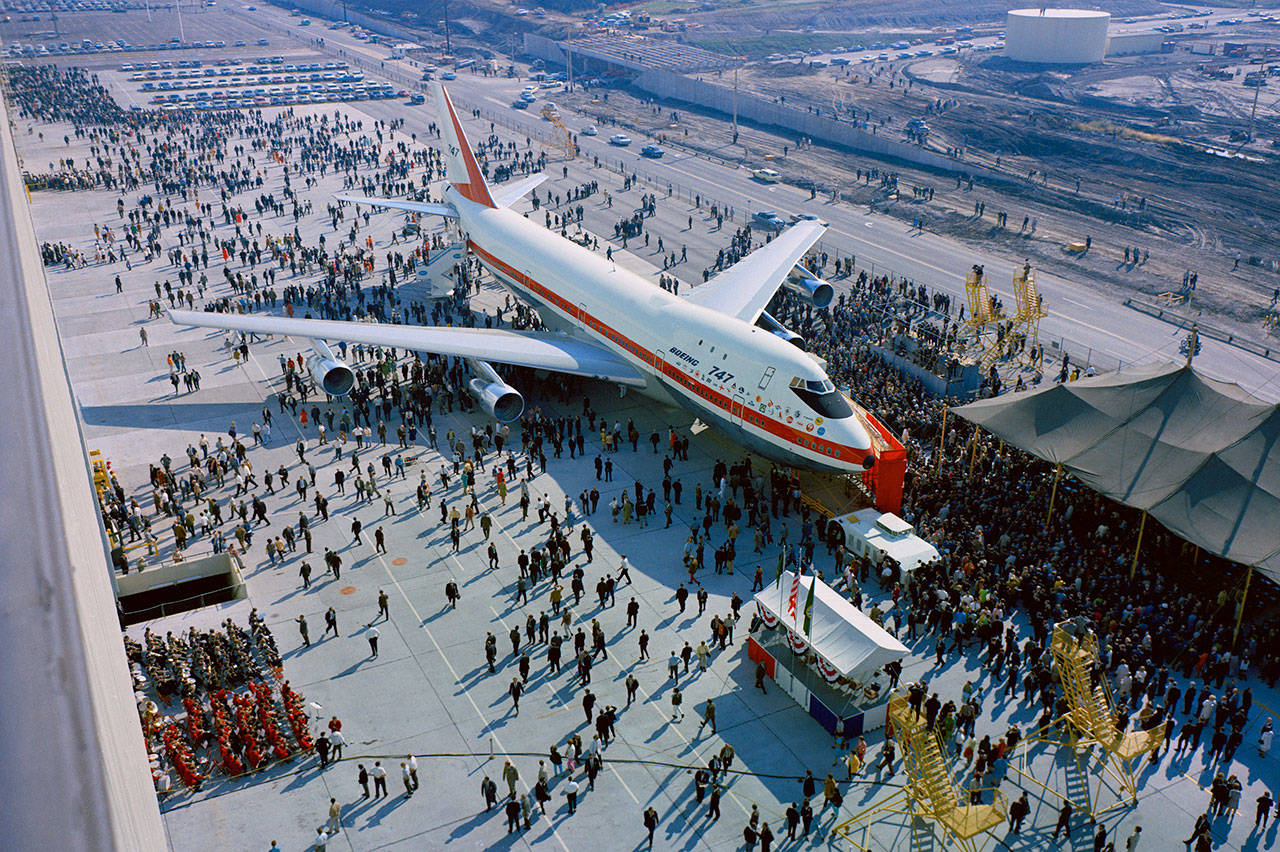By The Herald Editorial Board
The news last week from the Paris Air Show was hardly unexpected, but it made it certain: Boeing was no longer including four-engine “very large aircraft” in its annual forecasts for the commercial airliner market. In other words, Boeing, which gave the world the 747, didn’t see a viable place for the “Queen of the Skies” in a role it has served for nearly 50 years.
“We don’t see much demand for really big aircraft going forward,” Randy Tinseth, Boeing’s vice president for marketing, said at a briefing ahead of the air show, as reported by Bloomberg.
Everett’s Boeing plant, where the 747 is built, hasn’t seen the last 747 leave its floor. Having been designed from the start to haul cargo and passengers — its distinctive hump meant the flight deck wouldn’t take up valuable cargo space — Boeing will continue to market the 747-8 as a freighter, and it’s the likely choice for the federal government when it looks to update the jets used for presidential Air Force One duty.
But 50 years after work began on the first 747, airlines are moving away from jumbo jets. Delta and United, the last two U.S. airlines to fly 747s, plan to retire their Boeing jumbo jets by the end of the year. Airbus has yet to give up on its 747 rival, the double-decker A380, which was first launched in 2005. But the European-based aerospace company secured only two orders for the A380 in 2015, none last year, and has lost two orders for it so far this year.
The future of air travel, instead will belong to smaller widebody jets, such as Boeing’s 777 and 787, and the single-aisle 737s, built in Renton.
But that evolution can’t go without a recognition of what the 747 has meant to aviation and to the region.
“I don’t think anybody can imagine where aviation would be without the 747,” Joe Sutter, the late Boeing engineer who led the 747 project, told The Herald in 2006.
The 747’s impact on aviation is unquestionable. The 747 and its variants over the years have carried the equivalent of about half of the world’s population, and 747s have carried more cargo and freight than any other jet in the world, connecting cultures, putting global tourism within reach of more people and developing trade among nations.
But one also has to wonder where Everett and Snohomish County would have been without the 747.
The Herald’s Dan Catchpole, in writing about Boeing’s 50 years of history in Everett in May, recounted how Everett was one of three locations considered by Boeing to build what would be the world’s largest airliner in the mid-1960s. Needing access to rail, highways and a long runway, Boeing considered Walnut Creek, California; McChord Air Force Base in Tacoma and Everett’s Paine Field.
Sutter, employee No. 1 for the 747 project, convinced his superiors to stick with Washington state, and Everett won out.
By 1967, the first 113 employees, dubbed “The Incredibles,” arrived and began work on the 747, the first of which, the “City of Everett,” made its maiden flight on Feb. 9, 1969. Employment ramped up quickly after that, first to 15,000, then later to 50,000 at the Everett plant, which every Everett school kid — at least those fascinated by jetplanes — would proudly boast to anyone who would listen was the largest building in the world.
The plane that connected the world also connected Everett and Snohomish County to that world, bringing new employees and their families from across the United States and the globe, broadening the city’s culture and diversifying an economy that over the last half of the century would watch the city’s industry of the preceding 100 years disappear along the waterfront, one mill at a time.
Beyond the 40,000 that currently work for Boeing in Everett, it has fostered the development of other aerospace companies in Everett and Snohomish County that have helped bring total manufacturing employment in the county to more than 63,000.
The innovation that was necessary to deign and build the 747 continues today as work continues in Everett on the 777X, with its composite wings, a technology that also will be used on Boeing’s next airliner, the 797.
Winning production of the 777X for Everett required an investment by state lawmakers, a record tax break of $8.7 billion over 16 years, as well as significant concessions by Boeing’s union employees. But the 777X will be built here, and that experience with composites could conceivably bring the 797 to Everett as well.
The 747 is passing the torch to new aircraft, more efficient, cleaner and technologically advanced and better tailored to the changing commercial passenger market.
Boeing would honor the legacy of the “Queen of the Skies” to aviation and the region by keeping the torch in Everett.
Talk to us
> Give us your news tips.
> Send us a letter to the editor.
> More Herald contact information.

























